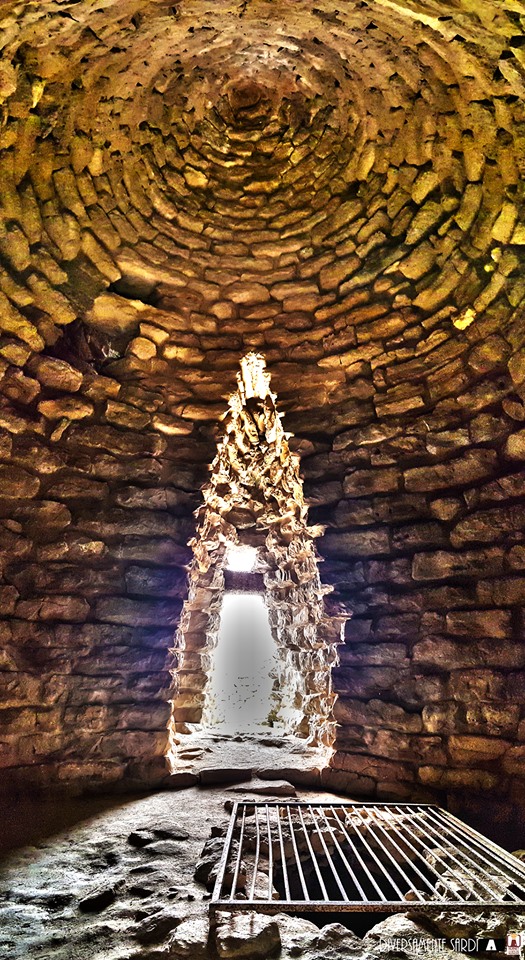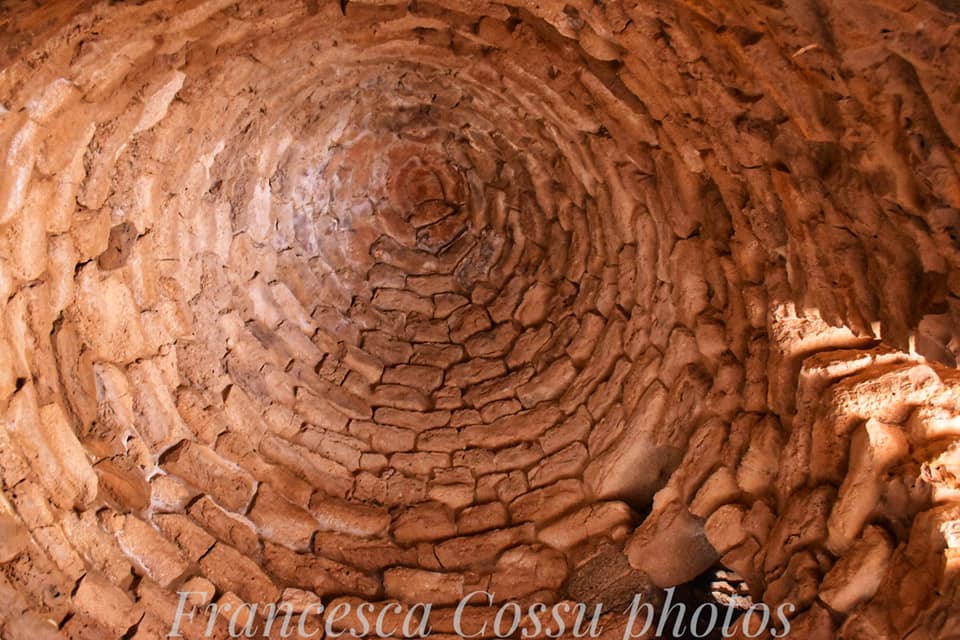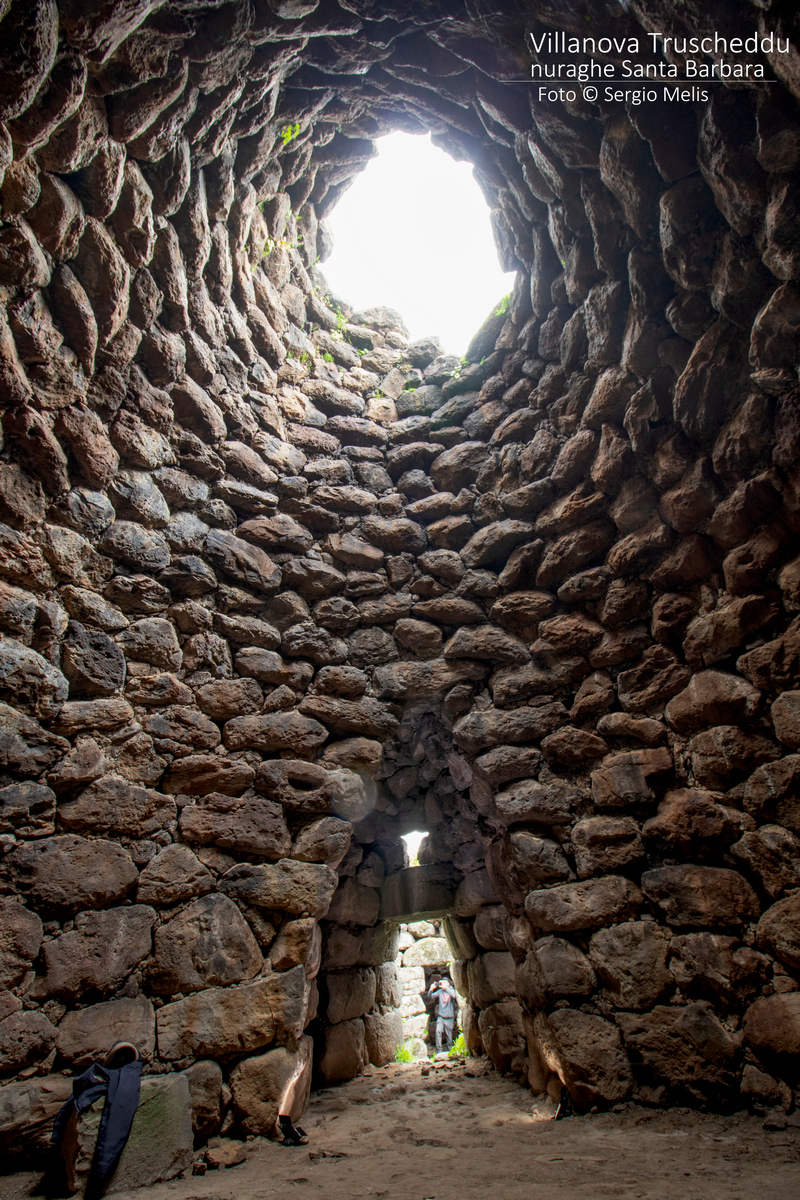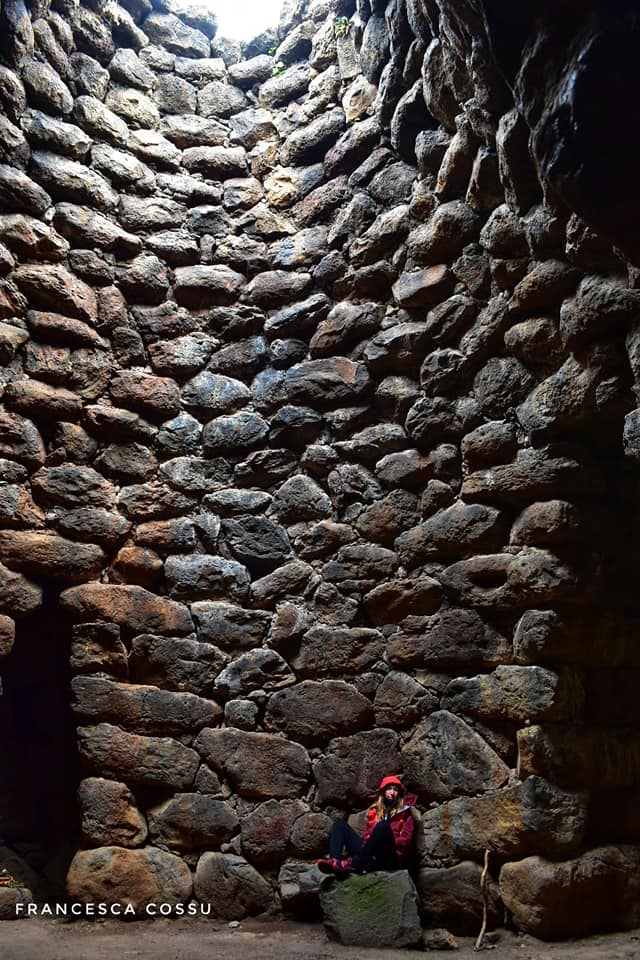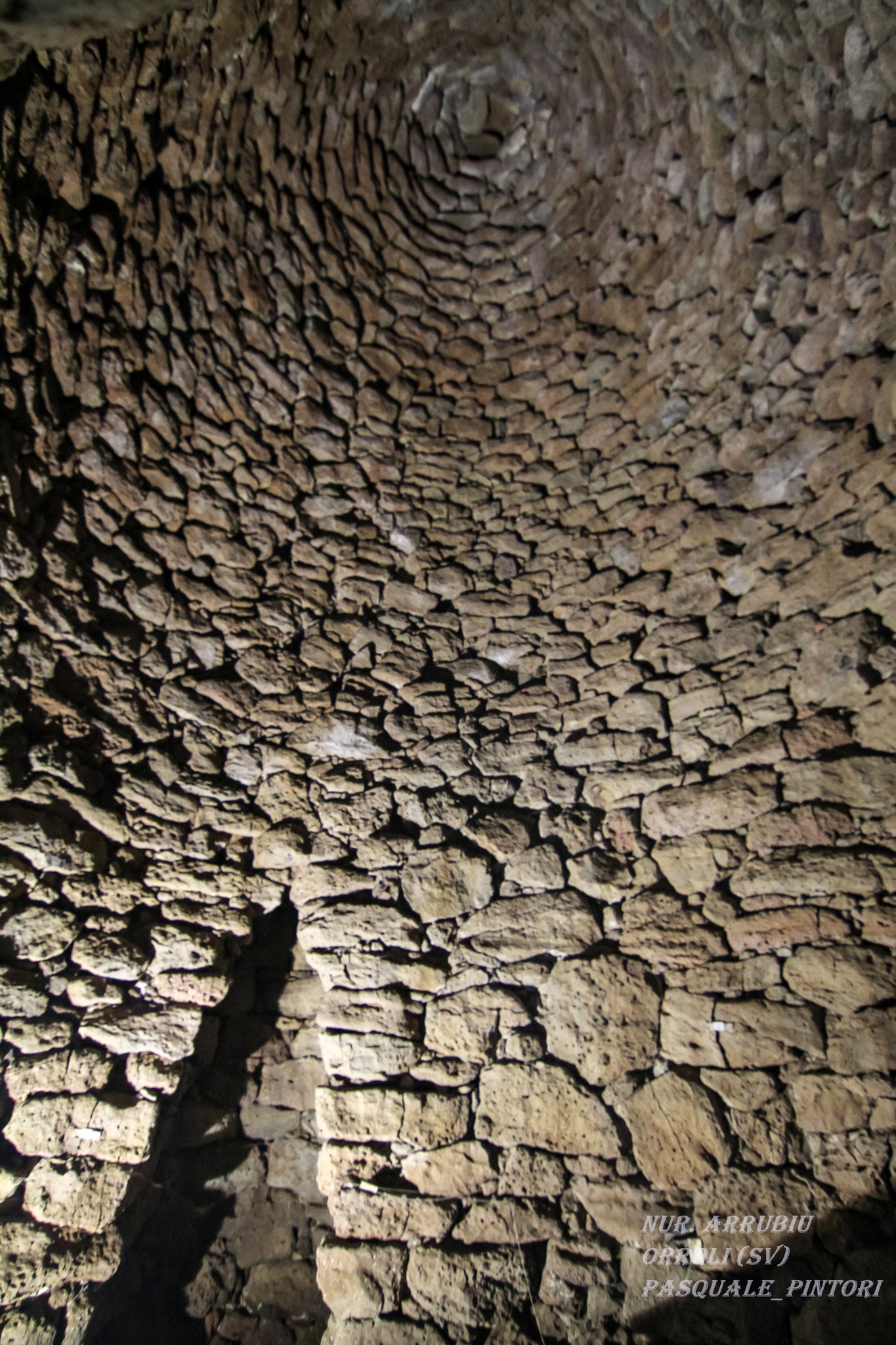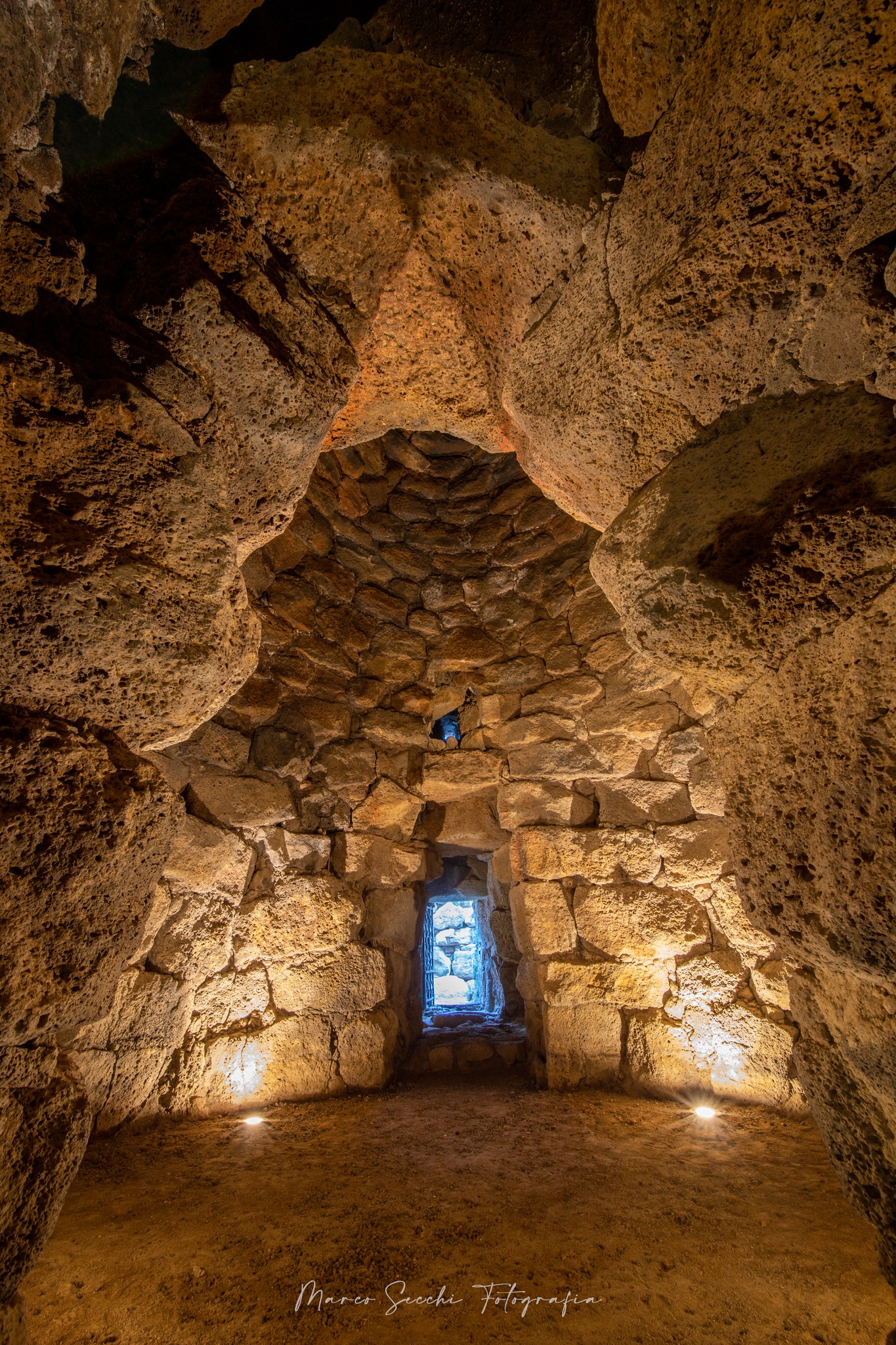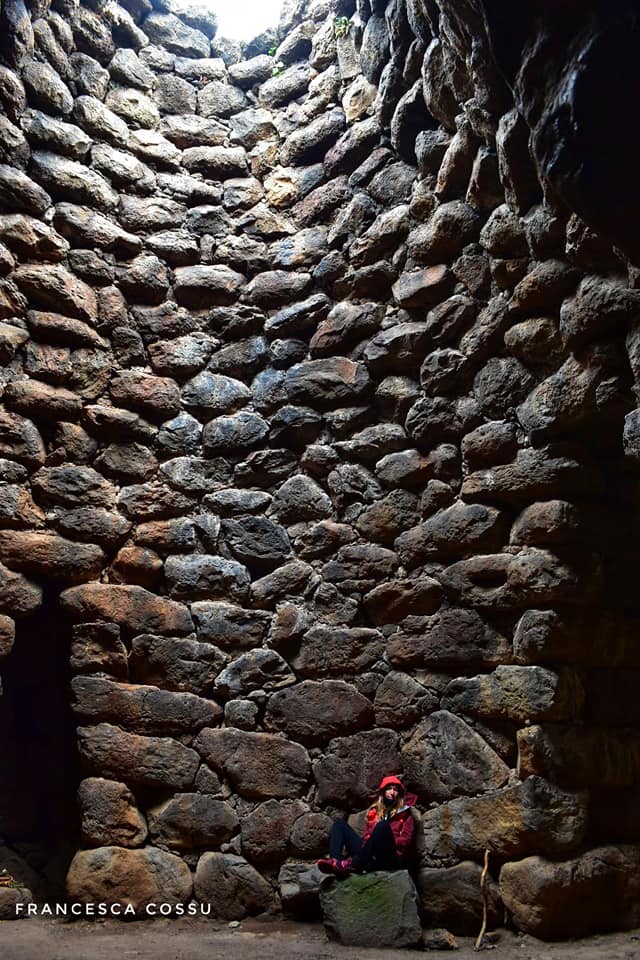The term tholos, derived from the architecture of the more or less contemporary tombs of the Aegean area, especially Mycenaean, is often alternated with the definition of “false vault,” both terms being quite improper to indicate the covering of the nuragic chambers for which the new definition of “corbellatura” is currently being established, a perhaps not very fortunate transposition of the more correct French term en corbellement. Essentially, it involves the elementary technique of the so-called “aggetto,” in which the covering of stones is achieved by making the upper course protrude over the one below it and progressively narrowing its diameter until a minimum circle is obtained at the top, which could be closed by a small slab. The stability of the blocks is guaranteed by the weight of the masonry that presses down on the non-protruding part of each stone; in the nuraghi, the mass of masonry that fills the gaps between the outer facing and the walls of the chamber or other internal spaces is generally made up of medium or small-sized stones or, more rarely, a mixture of gravel and earth. The tholos environment, we will continue to use this term for convenience, is typically circular or at most slightly elliptical, but there are rare cases where the base profile tends to be quadrangular (nuraghe Rodas-Bulzi), which, when elevated, returns to the usual circular shape. The diameter of the chamber can vary considerably, especially in relation to the size of the nuraghe: it generally ranges from 4 to 5 meters (it is slightly more than 5 on the ground floor of the nuraghe Santu Antine-Torralba; 4.80 m in the base chamber of Su Nuraxi-Barumini) but there are known environments that reach 6.50 m (Is Paras-Isili) and even 7 meters (Santa Barbara-Villanova Truschedu). The height of the main chamber, similarly, varies from about 12 meters of the nuraghe Is Paras-Isili, to 11 of the nuraghe Arrubiu-Orroli, down to 7.80 m of Su Nuraxi-Barumini and 7.55 of Santu Antine-Torralba: it is difficult for a ground floor chamber to be less than 6.50-7 meters.
(Paolo Melis “La Sardegna Nuragica – Storia e Monumenti”)
Attached, the nuraghi: Su Nuraxi di Barumini (ph. Nicola Castangia and Bibi Pinna); Is Paras di Isili (ph. Diversamente Sardi and Francesca Cossu); Santa Barbara di Villanova Truschedu (ph. Sergio Melis and Francesca Cossu); Arrubiu di Orroli (ph. Pasquale Pintori and Francesca Cossu); Santu Antine di Torralba (ph. @Marco Secchi fotografia).

